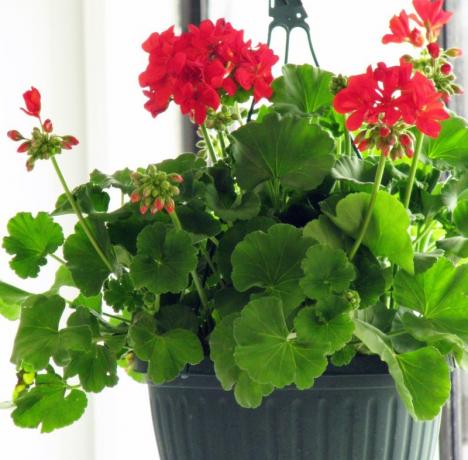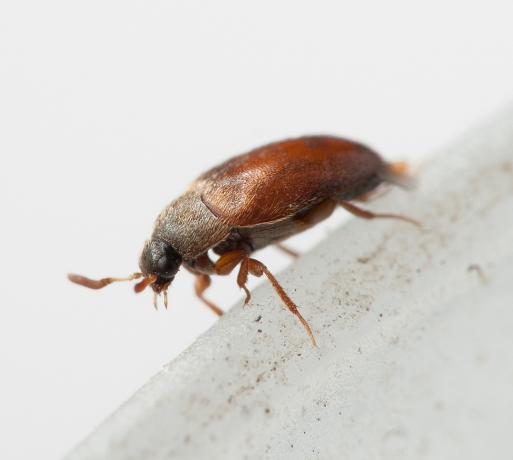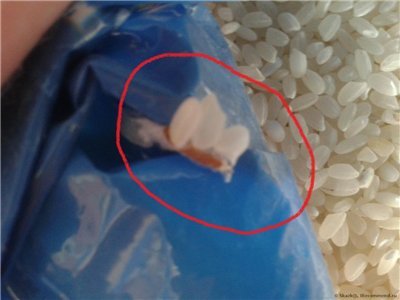Content
-
1 What a beast
- 1.1 Habitat
- 1.2 Presumptive methods for the peaceful consumption of humans and beetles
-
2 Control methods
- 2.1 Prevention
- 2.2 Extermination
- 2.3 Warehouse handling
- 3 Conclusion

You need to know the enemy by sight, if you can see it.
What a beast
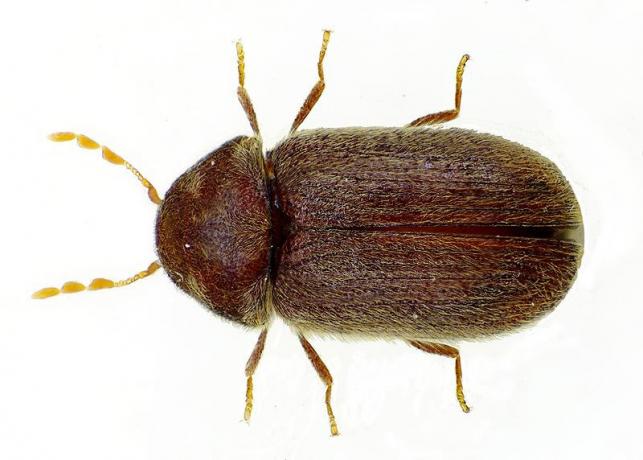
The photo shows the very small parasite, enlarged many times.
Stegobium paniceum (bread grinder)
A fairly common occupier of Russian kitchens, dachas, and indeed any premises where there is something to profit from. Are there bugs in the kitchen?
Here's a quick summary. It is a small (up to 3 mm long) arthropod.
In simple terms - a small brown bug, can fly, eats almost all types of food, especially loves:
- Fruits and vegetables;
- Cereals - rice, wheat, oats, buckwheat, beans, pearl barley, chaff, semolina, oatmeal;
- Bakery products - white and black (rye) bread, crackers, loaves, bricks of "Borodinsky" and "Darnitsky" bread;
- Pasta - vermicelli, "shells", noodles, pasta, spaghetti, "stars", etc .;
- Flour;
- If there are animals in the house, then they will also like cat and dog food, parrots and hamsters - their food is no exception;
- The trash can does not cause any negative emotions or the urge to naturally empty the gastrointestinal tract in our uninvited pet;
- We try not to leave water in the sink, remember that a drop for this parasite is equivalent to a small pool;
- Spices - bay leaf, coriander, pepper, hops-suneli, all kinds of dressings for soups, fish soup, borscht, meat dishes and other dishes;
- Everything you can eat - crumbs, bread crusts, unwashed dishes, soaked rags, cutting boards, pans with with yesterday's or earlier fat, uncovered butter or other fat, dried fruits, dried mushrooms, sausages and balyks, and the like;
- Confectionery - gingerbread, bagels, cakes, jam, sugar, donuts, pancakes, pies, etc .;
- Kvass, mash, sour milk;
- It is an active eater of herbariums and dried plants, seeds, tubers and bulbs.
In general, if any bacterial feast is taking place in your kitchen, these most difficult to pronounce in Latin comrades will take part in it. Therefore, do not be surprised if you have brown bugs in your kitchen while making bread kvass. Like all small insects, they reproduce extremely quickly.
The larvae are laid in cereals and other food supplies, which is why you find them there.
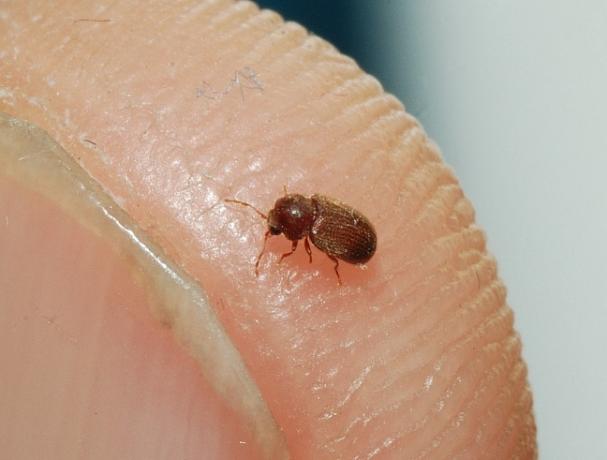
The dimensions of the foe are not so great, but is that good?
Habitat
There is an opinion that this representative of the kitchen landscapes is able to eat books, wood and everything in general. Well, hunger, as they say, is not an aunt, and a good book is not a sin to eat.
In fact, wood and cellulose lovers keep close to its stocks, i.e. live in the forest, at worst - in the library (at least someone uses stocks of imperishable works).
And since our small roommates have settled in kitchens, we can draw some conclusions:
- Creatures love warmth.
- They prefer high-molecular organic matter for food, that is, fruits of plants and products of the animal world;
- There are no predators in the apartment eating our "guests";
- The apartment definitely has conditions for the breeding of cute cockroaches.
Read also the article "All possible options: how to get rid of bugs in the kitchen cabinet".
Presumptive methods for the peaceful consumption of humans and beetles
Now suppose that if you remove a couple of items from this list, then the insects will simply be disappointed in our hospitality and leave our humble abode.
So what can we do? Let's think logically as Dr. Stravinsky advised:
- First point the previous list applies to us no less than to beeches, so we discard it;
- Second point, unfortunately, it characterizes you and me completely, so we will have to share food with the grinder further;
- Predators who find bread beetles tasty refuse to cohabit with humans. Most likely the TV is to blame.
- Someone's grandmother's grandmother advised that cereals and flour should be stored in a transparent container and in the cold. And the funny thing is that it works. If you take a clean (!) Glass jar, fill it with cereals and put it on the balcony, the grinder will not be there. So that.

Folk wisdom - business speaks.
In fact, an insect is a cosmopolitan, i.e. citizen of the Earth, like Diogenes of Sinop. It's just that a person temporarily created conditions that fit a six-fingered, that's all.
The favorite temperature of the reptile is + 30 ° С, therefore, most of the population of grinders can be observed in summer. Individuals live from 1 to 8 months. At temperatures above 15 ° C, the development of the beetle begins, while the relative humidity of the air can vary from 60 to 90%.
What can I say: the creature is quite tenacious and unpretentious. It is very difficult to deal with it, and simply sorting out the beans here cannot be done.
If the insect has managed to lay eggs, expect abundant offspring, which will be extremely difficult to destroy in the warm season. But a person can do a lot, so you shouldn't despair either.
Control methods
Prevention
Monitor mite and insect infestations on a regular basis.
You should also monitor the equipment.
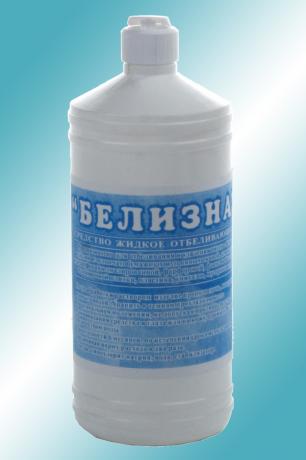
Sold in any business department.
- Regular local wet disinfection of infected areas.
- Disinfection of suspicious and high-risk areas.
- Regularly wash potential contamination sites with bleach solution with chloramphenicol. You can make the mixture yourself: crush and dilute 20 antibiotic tablets in a bucket of water, then add half a bottle of "Whiteness".
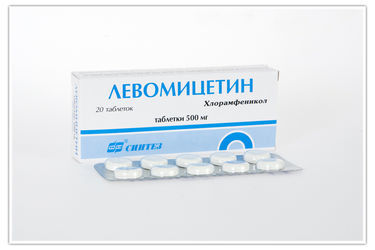
Can be purchased at any pharmacy.
Note! It is necessary to work in rubber gloves for household chemicals and a respirator or gauze bandage. If the solution comes into contact with the skin, wash it off with plenty of running water. If the mixture gets into your eyes, consult a doctor immediately!
This manual is intended for people who are not least worried about the cost of a preventive procedure.
Read also the article “How to get rid of midges in the kitchen and more - a practical guide”.
Extermination
You can use various methods of exterminating this insect:
- Cooling food to low temperatures, at which individuals die or stop multiplying;
- Special cleaning of processed products;
- Application of fumigation under synthetic film;
- Fumigation with hydrogen phosphide in a fumigation chamber.
Warehouse handling
One of the most important methods of controlling contamination is the treatment of storage facilities and equipment with using gas disinfestation, wet disinfection, aerosol treatment and a combination of the above methods.
Conclusion
If you still do not understand which pest we are talking about, we bring to your attention a video where you can to visually see what this enemy of food stocks looks like, and at the same time to find out how effectively with it fight.
How to clean the kitchen sink - see here.
